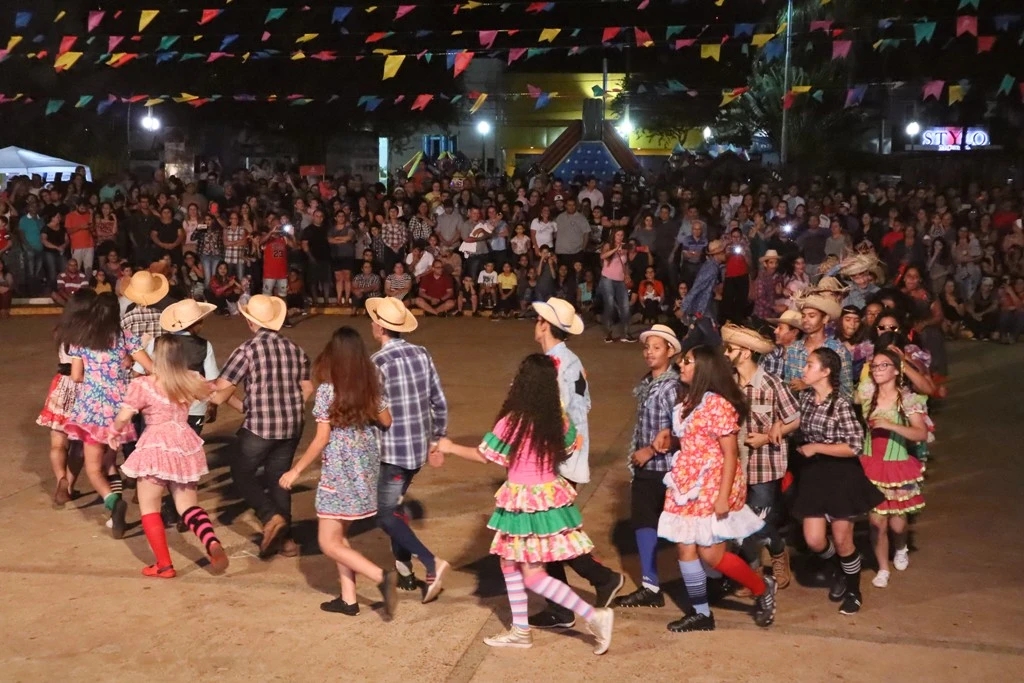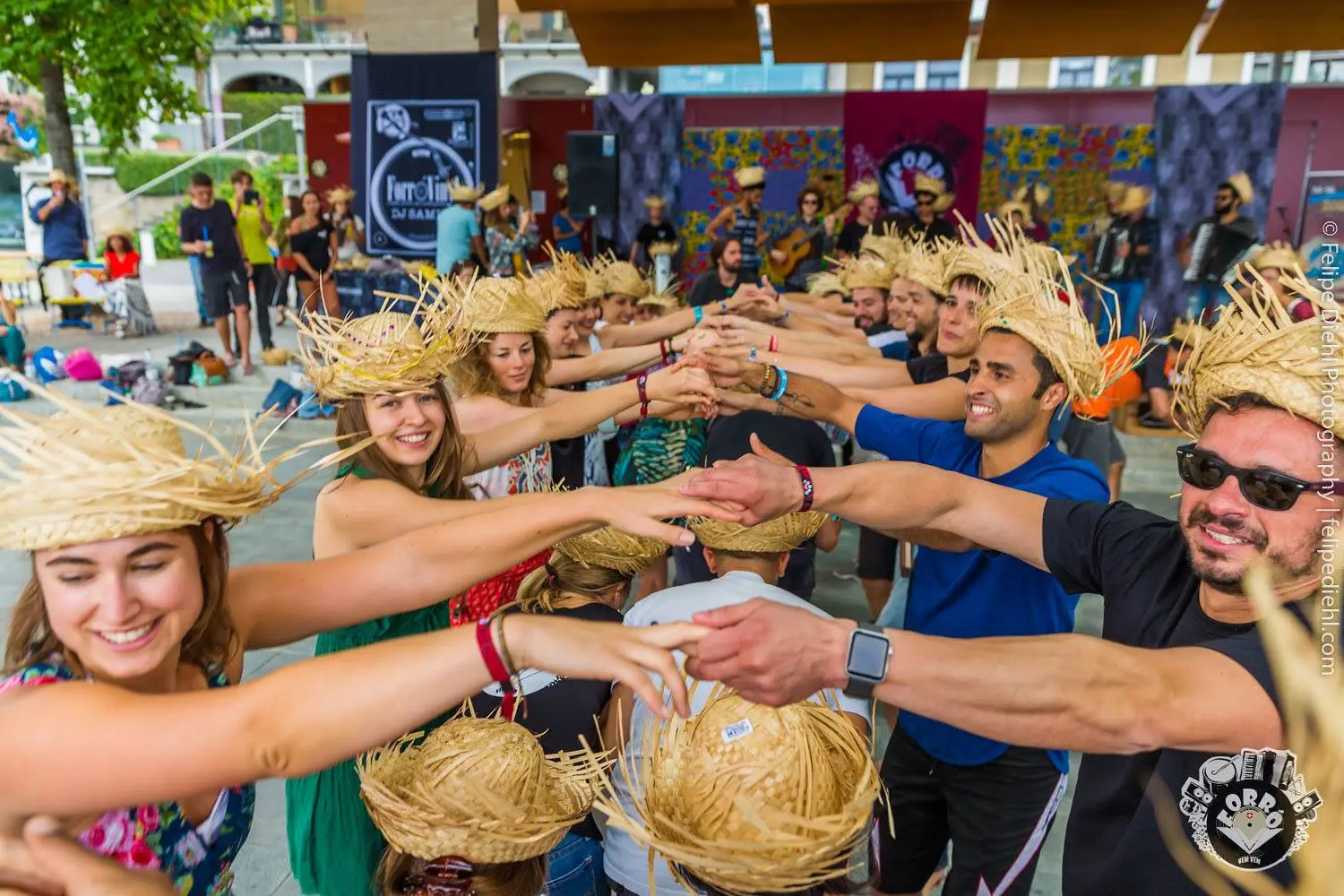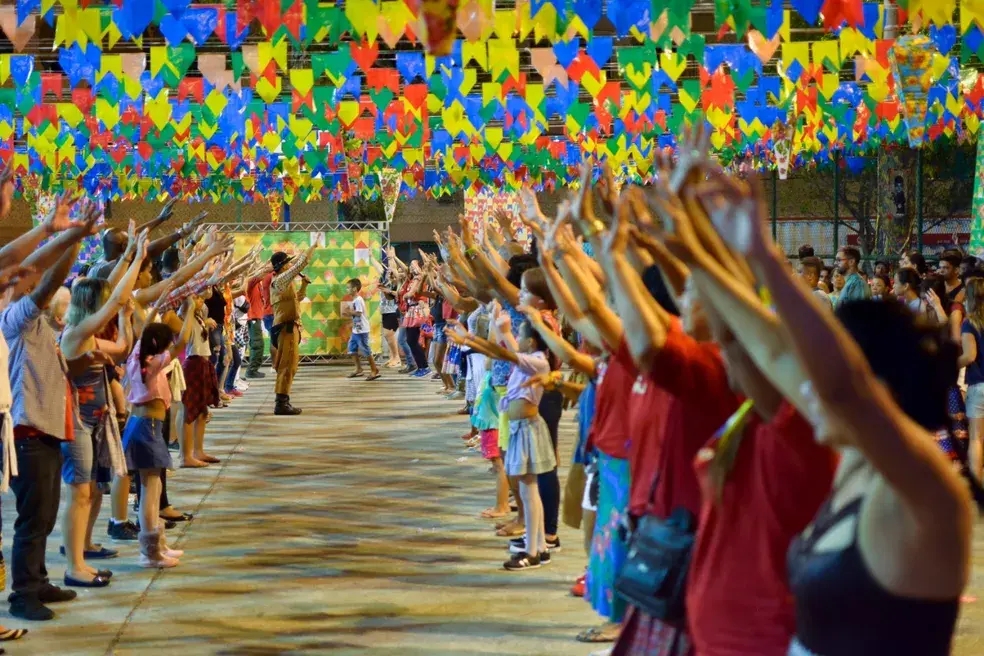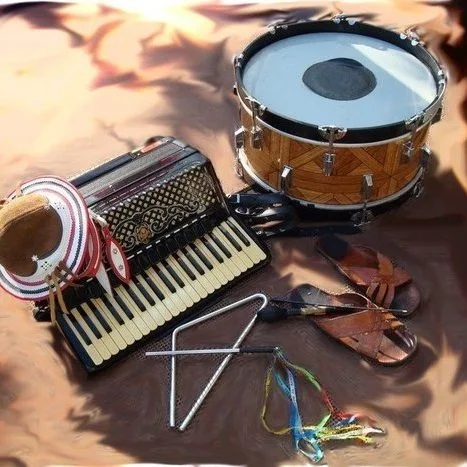What is forró anyway?
Forró is a happy couple dance from Brazil.
Name:
There are many stories about the origin of the name. Some say forró comes from the word forrobodó, which means “great party”. Some say it comes from the English word “for all” which is how immigrants interpreted it when they saw locals dancing it.
History:
Forró music exists in Brazil since the beginning of the 19th century. Originally limited to the north-eastern states, Forró spreads all over Brazil from the middle of the 20th century. It is mainly Luiz Gonzaga who managed to make the Forró and especially the Baião popular all over the country.
Culture:
The dance plays a big part during the annual Festa Junina (June Fest), also known as festas de São João, which is Brazil’s part in celebrating the nativity of St. John the Baptist.



In Brazil, the festival is primarily practiced by rural farmers, known, as caipiras or matutos. Men dress up as farm boys with large straw hats and women wear pigtails, freckles, painted gap teeth and red-checkered dresses.
The type of forró music played at this festival is greatly focused on saudade, a feeling of nostalgia or forlorn, for rural farm life.
Dance:
Forró dancing styles are informally often grouped into two main “families”, simply for practical reasons. The older Nordestino (north-eastern) type of forró and the universitário (university) forró that developed later in the South:
1 ) Nordestino forró, which is danced with the couple much closer together, with their legs and a characteristic sideways shuffle movement. Because of the intimacy, there are not as many step variations in this style.
Forró Nordestino: Rovena & Leo
2 ) Universitário forró, with its origins in the big southern cities of Brazil, is the more popular style outside of the Northeast. Its basic step is forward-backwards — slightly similar to traditional bolero or salsa. With more space between the pair, many more moves, steps and turns are possible than in Nordestino styles.
Forró Universitário: Camila & Anax
Like many Latin dance partners, forró has two dance roles, one leader and one follower. However, in European forró communities, there is a trend to break and discuss the traditional gender roles of leading men and following women. It is very common to see same-sex couples on the dance floor or leading women and following men.
Instruments:
Forró is typically played by a drum (zabumba), accordion and triangle. However, Pandeiro, flute or guitar can also be heard in many songs.


Rhythms:
There are several rhythms, like xote (a slower-paced rhythm), baião (the original forró) and arrasta-pé (the fastest). Amongst these, there are many styles of dancing, which vary from region to region, and may be known by different names according to the location.
Singer: Bicho de Pé | Songs: No Meu Pé de Serra, Só Xote & O Xote das Meninas
Singer: Nicolas Krassik | Song: Sanfona Sentida e Cheirinho de Mulher